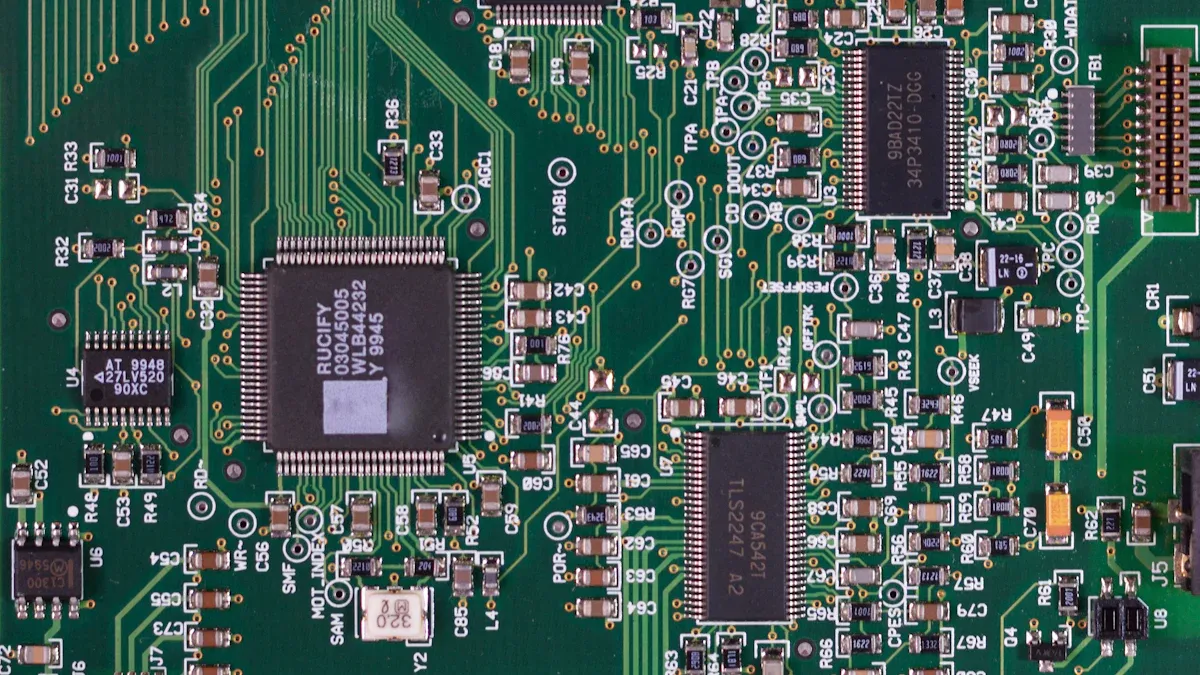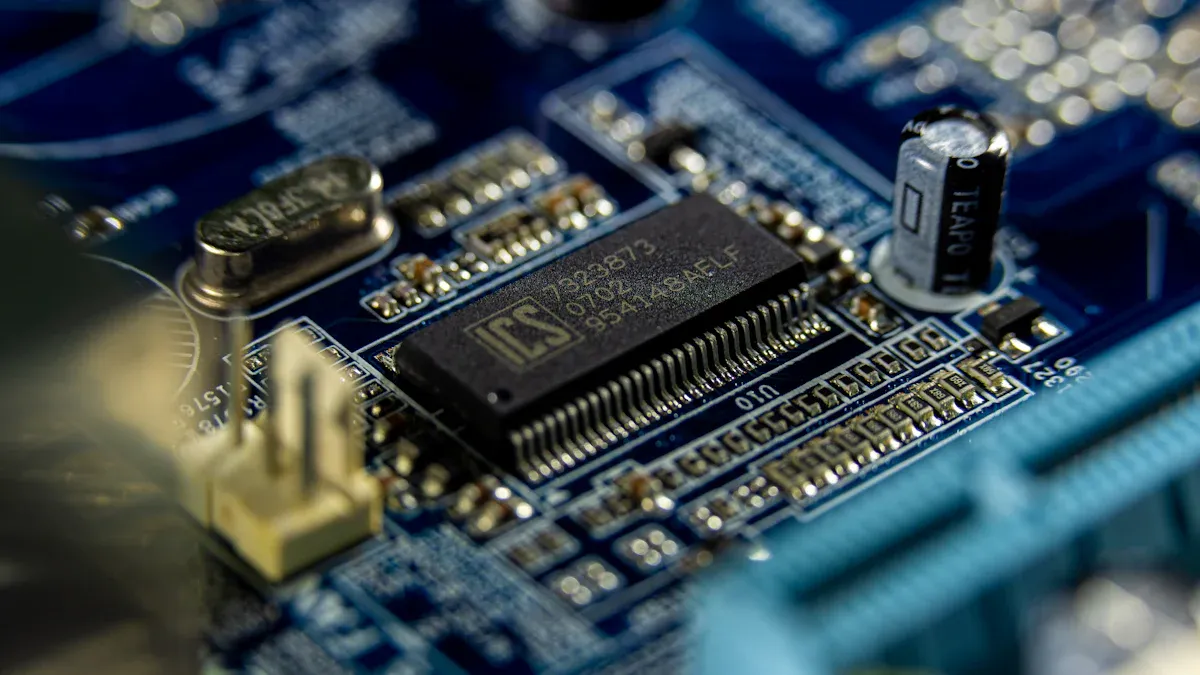
News

AC drives, including the Ac Variable Frequency Drive, play a crucial role in motor control by converting fixed-frequency AC power into variable-frequency AC power. This process enhances energy efficiency and precision. For instance, using a VFD AC Drive can reduce energy consumption by up to 50% in specific applications, such as fans or compressors, making it indispensable in industries.
The global AC drive market thrives due to rising electricity costs and a focus on sustainability. Low-voltage AC drives are expected to dominate with a 65.8% market share in 2024, driven by the demand for precise motor control and energy savings. Understanding the AC drive working principle is essential for selecting the right Ac Drive Manufacturer to meet these needs.
Key Takeaways
AC drives save energy by letting motors run at different speeds. This can cut energy use by up to 50%.
Knowing how AC drives work helps pick the right tools. It ensures they work well and last long in many uses.
Taking care of AC drives often keeps them working longer. It also avoids breakdowns and saves money.
Input AC Power and Rectification

Supplying AC power to the drive
AC drives rely on a steady supply of alternating current (AC) power to function effectively. These drives control the speed of AC motors by adjusting the voltage and frequency delivered to them. Modern systems typically operate with standard voltage ratings of 230V, 400V, or 480V, depending on regional standards and application requirements. The frequency of the supplied AC power is usually 50Hz or 60Hz.
Pulse Width Modulation (PWM) technology is commonly used in Variable Frequency Drives (VFDs) to regulate motor speed. The carrier frequency for PWM-based VFDs ranges from 3kHz to 4kHz, which is significantly higher than older Silicon-Controlled Rectifier (SCR) systems. Maintaining the correct volts-to-hertz ratio is essential to ensure proper motor operation, prevent overheating, and maintain an optimal power factor.
Rectifier's role in AC to DC conversion
The rectifier stage in a VFD plays a critical role in converting AC power into direct current (DC). This process is necessary because the inverter stage of the drive requires DC input to generate variable-frequency AC voltage for motor control. Rectifiers achieve this by using diodes or thyristors to allow current to flow in only one direction.
Different types of rectifiers offer varying levels of efficiency. For example, a half-wave rectifier achieves an efficiency of approximately 40.5%, while a full-wave rectifier reaches around 81.0%. Three-phase rectifiers are even more efficient due to their ability to produce a smoother DC output with smaller ripple. The table below highlights the efficiency rates of common rectifier types:
In addition to efficiency, synchronous rectification offers further improvements by reducing conduction losses. For instance, at a maximum load of 10A, diode rectification has an efficiency of 77.3%, while synchronous rectification achieves up to 81.6%. This improvement results from the lower conduction losses in MOSFETs compared to diodes.
DC Bus and Smoothing
Energy storage and stabilization in the DC bus
The DC bus in a variable frequency drive serves as an energy storage and stabilization unit. After the rectifier converts AC power into DC, the DC bus stores this energy temporarily before it moves to the inverter stage. This storage ensures a steady supply of power, even during fluctuations in the input voltage. By stabilizing the DC output, the DC bus prevents interruptions in motor operation and enhances overall system reliability.
The DC bus also plays a crucial role in maintaining the efficiency of the variable frequency drive. It minimizes voltage ripple, which can otherwise lead to unstable motor performance. Engineers design the DC bus to handle varying loads and ensure smooth operation across different applications. This stabilization is particularly important in industries where precise motor control is required, such as manufacturing and HVAC systems.
Capacitors' role in smoothing DC output
Capacitors are essential components of the DC bus. They smooth the DC output by reducing voltage ripple after rectification. This process ensures that the DC voltage remains stable, which is critical for generating variable-frequency AC voltage in the inverter stage. Capacitors achieve this by storing electrical energy and releasing it when needed, effectively filtering out fluctuations.
Choosing the right capacitance value is vital for optimal performance. Capacitors with higher capacitance, such as 2,200 µF, significantly reduce ripple voltage and stabilize the DC output. Smaller values, like 1,000 µF, are commonly used in power supply circuits for smoothing purposes. The table below highlights the performance effects of different capacitance values:
Capacitors ensure the DC bus delivers consistent power to the inverter stage, enabling precise motor control and efficient operation of the variable frequency drive.
Inverter Stage in Variable Frequency Drives

Converting DC to variable frequency AC
The inverter stage in a vfd plays a pivotal role in converting direct current (DC) from the DC bus into variable-frequency AC power. This conversion is essential for controlling the speed and torque of an ac motor. The inverter achieves this by using insulated-gate bipolar transistors (IGBTs) or similar semiconductor devices. These components switch the DC voltage on and off at high speeds, creating a pulse-width modulation (PWM) waveform that mimics sinusoidal AC power.
Several performance metrics highlight the effectiveness of this stage:
Quality of the PWM output, which determines the smoothness of motor operation.
Efficiency of the conversion process, ensuring minimal energy loss.
Precise control over motor speed and torque, enabling accurate speed control in various applications.
By generating variable-frequency ac voltage, the inverter stage ensures that the motor operates efficiently across a wide range of speeds, making it a cornerstone of modern ac variable speed drive systems.
Frequency and voltage control for motor speed regulation
The inverter stage also manages the frequency and voltage supplied to the motor, directly influencing its speed and performance. In variable-torque applications, the voltage magnitude adjusts linearly with frequency, maintaining a constant volts-to-hertz (V/Hz) ratio. For instance, a motor rated at 460 V and 60 Hz operates with a V/Hz ratio of 7.67 V/Hz. This method ensures stable operation and prevents motor overheating.
The frequency range typically spans from 0 to 50 Hz for standard motors. However, specialized motors can handle frequencies exceeding 50 Hz, allowing for higher speeds. Some vfds even support frequency settings up to 80 Hz, catering to applications requiring rapid motor operation. By precisely controlling these parameters, the inverter stage enables efficient speed control and enhances the versatility of the ac drive.
Control System in Variable Speed Drives
Monitoring motor performance with control systems
The control system in a vfd plays a vital role in monitoring motor performance. It ensures the motor operates efficiently and safely under varying conditions. These systems track critical parameters to maintain optimal performance and prevent potential issues. For example, they measure total harmonic distortion (THD) to assess power quality and signal-to-noise ratio (SNR) to evaluate the clarity of signals. Additionally, they monitor the effective number of bits (ENOB) to determine resolution accuracy and throughput to gauge the sampling rate of data acquisition.
Temperature sensing is another crucial aspect of motor performance monitoring. It measures the temperature of motor windings, power devices, and the surrounding environment. This helps prevent overheating and ensures safe operation. Position sensors, such as encoders or resolvers, track the motor shaft angle to enable smooth speed control. The table below highlights some common parameters monitored by control systems:
By continuously monitoring these parameters, the control system ensures the variable speed drive operates reliably and efficiently.
Feedback mechanisms for precise operation
Feedback mechanisms are integral to the control system of an ac variable speed drive. They provide real-time data to adjust motor performance dynamically. For instance, current sensors measure the flow of electricity through the motor, while DC bus voltage sensing ensures stable power delivery. These inputs allow the vfd to make precise adjustments, maintaining consistent performance even under fluctuating loads.
Closed-loop feedback systems are particularly effective in achieving adjustable speed control. They compare the actual motor speed with the desired setpoint and make corrections as needed. This process minimizes errors and enhances the accuracy of speed control. For example, if the motor speed deviates from the target, the control system adjusts the frequency and voltage supplied by the inverter stage. This ensures the ac motor operates at the desired speed without compromising efficiency.
Feedback mechanisms also improve safety by detecting faults or abnormal conditions. They trigger protective measures, such as reducing power or shutting down the system, to prevent damage. These features make the control system in a variable frequency drive indispensable for modern industrial applications.
Protection and Safety Features in VFDs
Overload protection and fault detection
A vfd includes built-in overload protection to prevent damage to the ac motor and the drive itself. Overloading occurs when the motor operates beyond its rated capacity, leading to excessive heat and potential failure. The vfd monitors the motor's current and compares it to the preset limits. If the current exceeds the threshold, the drive reduces power or shuts down the system to protect the motor.
Fault detection is another critical feature of a variable frequency drive. It identifies issues such as short circuits, phase loss, or overvoltage conditions. Advanced vfds use diagnostic algorithms to detect faults in real time. For example, if a short circuit occurs, the drive immediately disconnects power to prevent further damage. These features enhance the reliability of the ac variable speed drive and minimize downtime.
Safety mechanisms to safeguard motors and drives
Safety mechanisms in a vfd ensure the protection of both the motor and the drive. One key feature is the ground fault protection system, which detects leakage currents and prevents electrical hazards. Another important mechanism is the thermal protection system. It monitors the temperature of the motor and the drive components, shutting down the system if overheating occurs.
Modern vfds also include surge protection to shield the drive from voltage spikes. Additionally, they feature emergency stop functions that allow operators to halt the motor instantly during critical situations. These safety measures ensure the longevity of the ac motor and the drive while maintaining safe operation in industrial environments.
AC drives, including the variable frequency drive, have revolutionized motor control by enabling precise speed control and energy efficiency. They allow motors to operate at variable speeds, reducing energy consumption and extending motor lifespan. Industries increasingly rely on this technology to optimize performance while lowering maintenance costs. Understanding their working principle helps users maximize these benefits.
The growing emphasis on energy efficiency highlights the importance of variable speed drives in modern applications. Their ability to adjust frequency and voltage ensures reliable motor operation across diverse industries.
FAQ
What is the primary purpose of an AC drive?
An AC drive controls motor speed and torque by adjusting frequency and voltage. This improves energy efficiency and ensures precise motor operation in various applications.
How does an AC drive save energy?
AC drives reduce energy consumption by matching motor speed to application requirements. For example, they lower fan or pump speeds during low-demand periods, minimizing wasted energy.
Can AC drives extend motor lifespan?
Yes, AC drives reduce mechanical stress by enabling smooth motor starts and stops. This minimizes wear and tear, extending the motor's operational life.
Previous:
Next:
Please give us a message